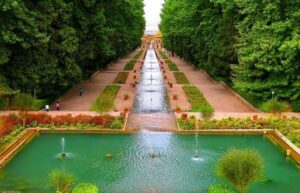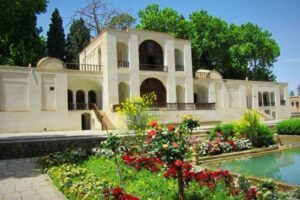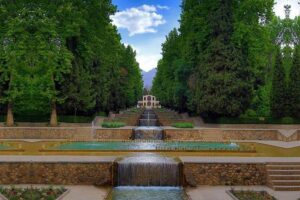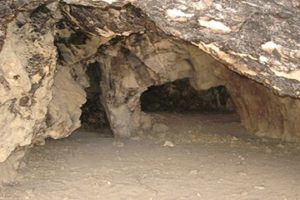In the distant past, a road started from China and continued to Europe after passing the Iranian plateau. This road was called Silk Road because the essential commodity of its merchants was silk. Where the Silk Road reached Kerman, the city of Mahan was located on the route of commercial caravans. It was there that later Mahan’s Shazdeh’s Garden” was built and gave that desert land greenery and remarkable freshness.

Shazdeh’s (Shahzadeh) historical garden is only a few kilometers away from Mahan city. You can see this garden right in the beautiful Tigran expanse and Joupar mountain slopes. It is in the southeast of Kerman province, and a place with many historical sites and archeological and tourist attractions. The garden covers 3.5 hectares of land, or a little more than 400 m in length and 122 m in width. For this reason, no historical garden in Iran is known to be bigger than Mahan’s Shazdeh Garden. It is equally unique in beauty.
Shazdeh garden was built during the reign of Naser al-Din Shah Qajar, and at the request of the ruler of Kerman, Khan Baba Khan Sardar, in 1276. Later, Prince (shazdeh) Naser al-Dawlah, another ruler of Kerman, expanded it and spent eleven years on this work. However, after his death, they did not finish the unfinished work of building the garden and its structures and left it half-built.

Where Shazdeh garden is located two different landscapes are visible: the inner one is a world of greenery and trees and water flow, and the outer one is a desert area. This is one of the wonders of the ecosystem where a garden full of freshness and prosperity has been built in the heart of dry and desert soil.
The structure or the building in the garden is spectacular. It is a two-tiered structure with a pediment that you can enjoy watching because a lot of taste, art, and creativity has been used in its construction. The inside of the garden is also full of fountains that can’t be seen anywhere else.
The main pavilion is built towards the bottom of the garden, and it has comfortable rooms for living and receiving guests, but the biggest room is the most beautiful. A large oval shaped pond in that building should also be mentioned. There are two side walks on both sides of the Pavilion, and rows of tall green trees can be seen on each sidewalk.
Stones and bricks have been used as edges of the flower beds and tree sections. Geometric patterns can be seen everywhere in the garden mansion, and from this point of view, it has a charming harmony with the garden space. Stone and brick edges also demarcate the plots and gardens. In addition to them, numerous fruit trees can be seen and flowing water on all sides of them.

The water that flows in Bagh Shazdeh originates from Kariz (Qanat) and the Tigran River. Because the land of the garden is sloping, the water overflows from the highest part of the garden and spreads throughout the garden with a fantastic irrigation system, showing its builder’s power of creativity. The sidewalks are marked with water streams. In this way the water flow irrigates the trees and the green areas and at the same time adds to the garden’s beauty. In the upper part of the garden a bath is built which is one of the wonders of Iranian architecture. This bath (garmabeh) has a dome and an arch and other elements of Iranian architecture, as well as paintings showing art and beauty at its peak.
The Shazdeh Garden was registered in the list of national works of Iran on November 5, 1974, and because of its rare value, it was included in the UNESCO world heritage list in 2011. A part of Shazdeh garden of Mahan has been handed over to the private sector to provide means for tourism. Though, this handing over met with UNESCO’s disapproval and concerns about tampering with this universally registered work.










